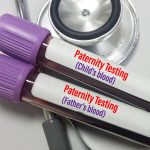Although your DNA is unique to you—a “fingerprint” of your genetic code—DNA samples may not always provide a comprehensive picture. The DNA samples utilized in criminal cases are typically of poor quality, making analysis extremely difficult. If a DNA sample is analogous to a fingerprint, analyzing mixed DNA samples in criminal cases is often similar to isolating a single person’s print from a public building doorknob after hundreds of others have touched it. Despite the difficulties in analyzing these DNA samples, prosecutors routinely use them in court, employing technologies that have not been examined and verbiage that might mislead the jury, providing a false impression of scientific certainty to a questionable procedure. This is why the source code of any DNA test program must be made available for review. It is vital to establish if the software is dependable enough to be utilized in the legal system and how much weight should be given to its results.
1. A Breakdown of DNA Data
To understand why DNA software analyses may be so deceptive, it’s helpful to know how they function. Many genetics labs are working on DNA; one of them is Choice DNA. To begin, DNA sequences are often referred to as genes. A “locus” is a more general term for a specific position in the gene sequence. Alleles are variations of a particular gene or the DNA located in a particular locus. Imagine a highway with numbered exits representing loci and alleles representing the individual towns at each stop to oversimplify.
Forensic DNA analysis generally focuses on 13 to 20 loci and the allele present at each locus, which comprise a person’s DNA profile. A type of fingerprint may be established by examining a significant number of loci whose alleles are dispersed across the population. In other words, knowing which cities and exits a driver passed through can help you figure out which route they took.
To determine the alleles contained in a DNA sample, a scientist slices the DNA into distinct alleles then applies an electric charge to pull it along a gel in a process known as electrophoresis. Different alleles move at different rates, and the scientist can calculate how far each one has gone and then look up which allele corresponds to that length. The DNA is also dyed with a dye, so the more of it, the darker the gel’s blob.
2. The Difficulty of Analyzing DNA Mixtures
Our DNA may be present in every cell of our body. The more cells we shed, the higher the concentration of our DNA that may be identified, which typically implies that DNA testing is more accurate. On the other hand, our DNA may be transmitted from one item to another. As a result, it’s feasible that your DNA can be found on products you’ve never touched or in places you’ve never visited. For example, if you scratch your face in a doctor’s waiting room, your DNA may be detected on magazines on a table next to you that you never glanced through. Your DNA can move from a jacket you lend a friend to products they come into contact with or sites they visit.
Given the ease with which DNA may be deposited, it’s no surprise that DNA samples from crime scenes are frequently a blend of DNA from numerous persons or “donors.” Investigators collect DNA samples by swiping a cotton swab at an area where the culprit may have deposited their DNA, such as a handgun, a contraband container, or a victim’s body. In many circumstances where the perpetrator’s body fluids are not involved, the DNA sample may only have a little bit of the perpetrator’s DNA, which might be less than a few cells, and will almost certainly contain the DNA of others.
Running these DNA mixture samples via electrophoresis produces substantially noisier findings, frequently containing mistakes indicating new alleles at a locus or ignoring alleles. Human analysts then select which alleles in the gel are black enough to count and light to discard.
3. Probabilistic Genotyping Software and Their Problems
However , like any statistical model, these tools might be improperly developed. And whether what and how assumptions are included might lead outcomes to differ. They all employ statistical modeling, but the final figures vary due to the numerous design changes between each publication. The statistical modeling used by every probabilistic genotyping software is the same, but the output probability is impacted by how that model is developed. Different probabilistic DNA tests, like varied election models, take other methods to which aspects are evaluated, counteracted, or disregarded, and at what level. If this isn’t as rigorous as you thought, that’s the point—and the problem. In our highway scenario, this is analogous to a software tool that claims to tell you how likely it is that you traveled on a particular route based on a list of towns and exits you passed. Not only is the outcome influenced by the list’s completeness and correctness, but the map used by the software in different labs like ChoiceDNA and the data supplied to it also plays a significant role.



















